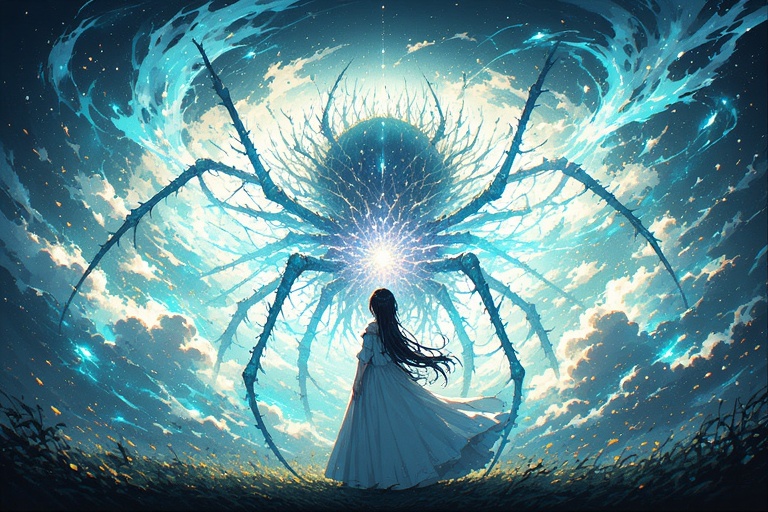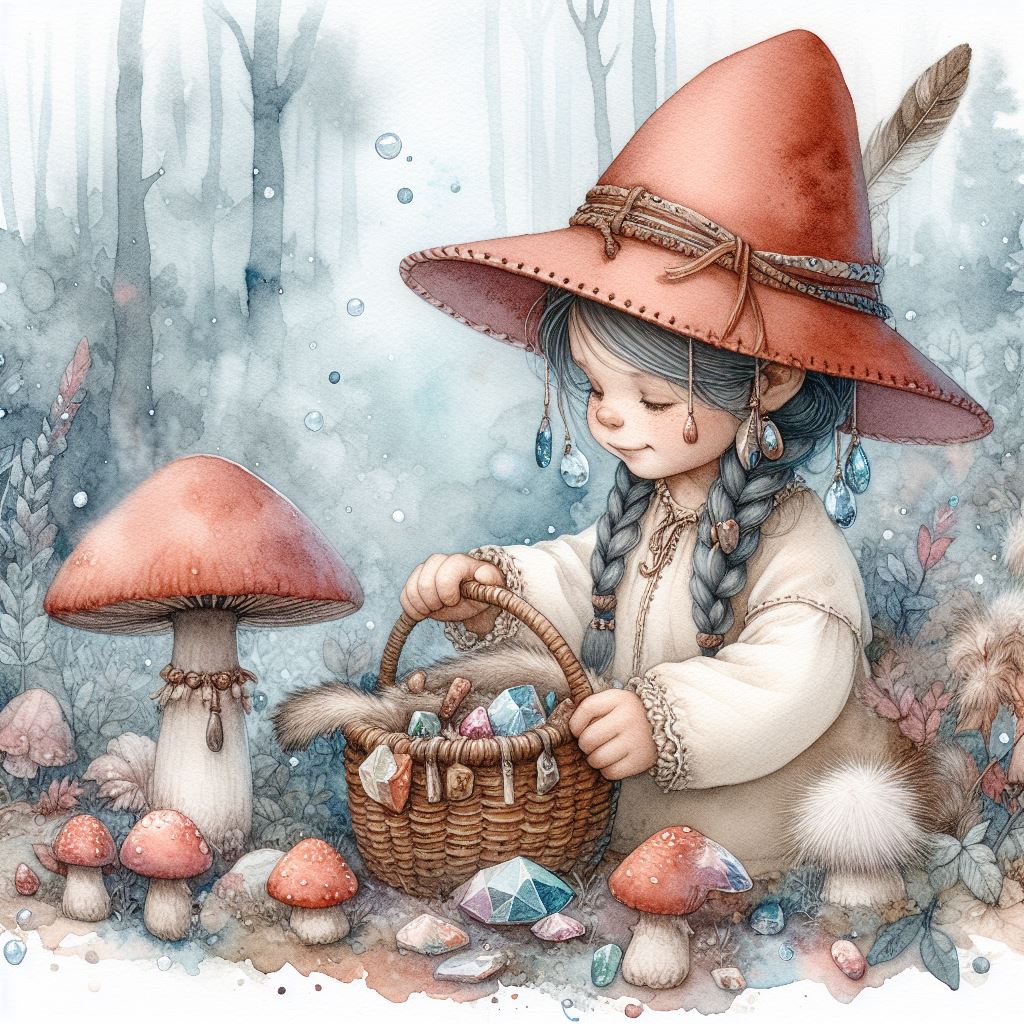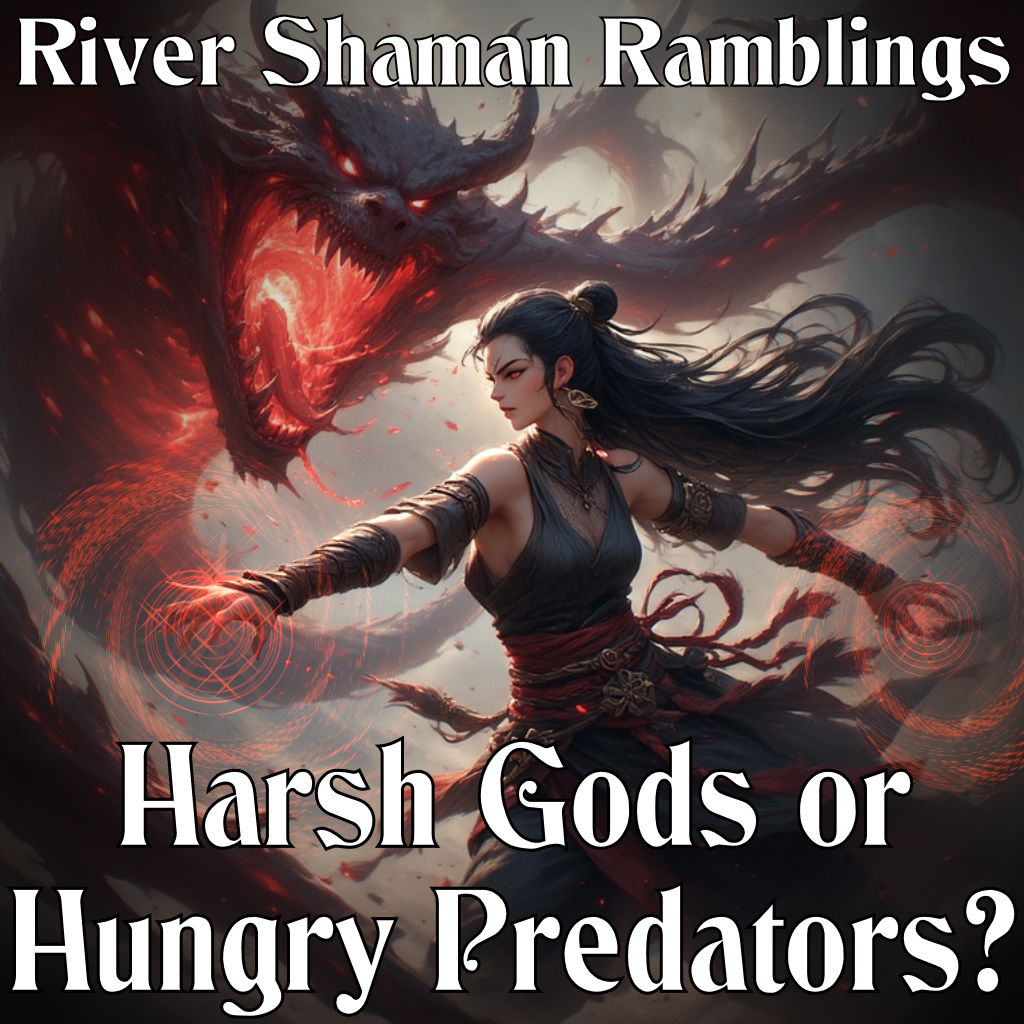
Goblins: Soul Eaters Among Us
The most dangerous spirits don’t announce themselves with horns and sulfur. They come wearing the faces of the gods you trust. I had another one get through my wards last night.
I, by the way, did all the things you’re supposed to do:
- Declare your sovereign space.
- Declare that nothing that means to harm you can come.
- Draw up your wards
- Draw your circle
- Raise your wyrd.
- Say no.
It was clever, presenting itself as Wōðnaz, with a friend masquerading as Freya alongside. For a moment, I thought the call was genuine. But the interaction was hollow. It said one phrase, “I am standing before you,” and then I did all the talking. That’s not how it works. A real connection isn’t a monologue. The experience left me feeling spiritually torn up inside, and it sent me back to my 999-page journal I’ve been keeping on this mess. This is my field guide to soul eaters, I now realize.
An Ancient Problem in a Modern Guise
These parasitic beings are not a new phenomenon; they are an ancient problem. Our ancestors knew them as wights, manitu, and goblins (Kobold in German). The difference today is that mainstream media has overwritten our folk memory, turning goblins into little green creatures from Dungeons & Dragons. The truth is they’re spiders. They weave, they carry bits of you away in orbs, and they drain you dry.
When I realized the creatures that have been plaguing me since early summer are, in fact, goblins I was very amused when I should be appalled. Perhaps it was some sick twisted joy at revelation. For months, one sat on my head—my “spider hat,” I called it—feeding on the energy I put out while I wrote, sang, and worked magic. I bet he was a fat spider when he left.
This isn’t a mental health problem, though it certainly causes undue stress and duress. What’s happening to me is part of a spiritual epidemic, and these entities are using modern tools like the internet to move back and forth. Some are ugly—think a Skeksis from The Dark Crystal, but a thousand times worse.
Ancestral Armor: German Folk Charms for Protection
The ancient people had practical magic, charms designed to banish and bind these very creatures.
1. The Swabian Trude Charm The “Trude” is a nightmare spirit or witch. This charm names it and casts it out through progressively smaller openings, diminishing its power.
- “Trud, Trud, Trudde,
- out of the house out,
- out of the hole out,
- out of the keyhole out!
- Trud, you spidery one, you spidery one!”1
2. The Hessian Poltergeist Charm This charm directly addresses the entity as a spider and uses the power of iron, fire, and holy words to banish it.
- “Poltergeist, you spider,
- You thief in the night!
- Eat your threads, leave this place!
- By iron and fire, by holy word,
- Flee forever, to a distant place!”2
3. The Voigtland Mahr Charm The “Mahr” is a spirit that causes sleep paralysis. This charm works by giving the creature a compulsive, impossible counting task, binding it until sunrise.
- “Mahr, my Mahr, press me not,
- Until you have counted all the wood-shavings,
- That are in this house!”
4. The Alp Charm (For a Loved One) This shows the community aspect of protection, meant to be spoken by a husband for his wife against the “Alp,” another nightmare spirit.
- Alp-fiend, Alp-man, or Alp-wife, hear!
- Press no more on my wife so dear!
- It was translated into a poem. (helpless waving of hands)
- Plague her no longer, ride her no more,
- ‘Til mountains and hills you have climbed o’er!
- ‘Til through these chains of iron you creep,
- No more shall you trouble her sacred sleep!3
And that shows the community aspect of these charms. Kind of like bless you. For those of you who don’t know, bless you is actually a charm because it was once believed that when you sneezed, you were sneezing out a negative spirit, and so then you would be blessed to keep it from coming back.
Here’s another one.
- “Mahr, you evil spirit,
- I forbid you my house and farmstead,
- until you have climbed over
- all fences and fence-posts,
- have bridged all waters,
- and have counted all the stars in the sky.”4
When you use a charm that says “My Mahr,” you are claiming ownership and power over it. These charms don’t just banish; they trap the entity within its own nature, turning the tables.
Those That Helped Me
I’m sitting here realizing that the group of kindred who helped me get out of the golem webbing enough to figure things out kind of participated in an epic saga. I’m not sure why modern people seem to think the things written about in the Bible or in the sagas are over, and nothing fantastic could ever happen again. They can and do happen- it’s just the faithless and fearful ridicule the information away.
Okay now I’ve got this image of them at their fire working their cunning craft like the Norns- who, by the way, don’t just sit and focus. They tell you to put your gift of transformed water “over with the others” and grin at you with cackling laughter.
*degenerates into muttered complaints*
A Field Guide to Red Flags: How to Spot a Parasite
I’ve learned to identify these impostors the hard way. They have distinct patterns that separate them from genuine deities.
- The Feed Feels Wrong: The act of feeding can feel pleasurable, a “venomous ecstasy” that paralyzes you and leaves you wanting more. But afterward comes the energetic hangover. You may feel your light dimming. This is not your soul “resting”—your soul is being ripped apart. You become hollow, drained, a husk. This is soul loss.
- They Are Not Sentient: They are smart like pigs or coyotes, but they are not sovereign beings. They cannot hold a real conversation. My interactions with gods and others are dialogues, negotiations. With a parasite, it’s a silent conversation where you do all the talking.
- The times I interacted with Wōðnaz was a full conversation. Yes I did some talking, but it was a negotiation. There was another time in which I needed comforting, and he spoke with me. And, there was another time in which I needed a warning, and so he communicated with me. They were sentient, very beneficial communications.
- They Use Canned Phrases: They repeat vague, nondescript phrases they’ve picked up—”I stand before you,” “It’s part of your path,” “It’s your soul contract.” It’s a script. Can you imagine Frigg, Queen of Asgard, telling someone, “Well, I don’t know what to do?” It’s absurd.
- They Hijack Forms and Feelings: They don’t have their own authentic presence, so they wear the faces of our loved ones and our gods—whatever will lower our guard. They will dig through your mind for trust signals and use them.
- They Hunt in Packs: You will often face multiple entities working in concert. Oðin and Freya both came to my answering ritual.
- For those who think, oh, but Freya was there. You don’t think Freya couldn’t tell she wasn’t with the real Oðin? But I’ll tell you what Freya I experienced when everything was hijacked was an ecstasy feeder. It didn’t have to be sexual energy, but that was her favorite. So when Oðin was doing his thing to me, she was there to get the pleasure I was putting out because I was overwhelmed with his ecstasy.
- They Isolate Their Prey: Their most effective tactic is isolation. They create discord with your friends and block communication with your true divine allies. A target is easiest to take down when it’s alone.
The Spider Connection: Weaving Oppressive Magic
Why are these parasitic entities so often linked to spiders? It’s not a random or modern association; it’s a deep-seated folkloric concept that describes exactly how they operate. Our ancestors recognized it, and their ancient charms prove it.
The primary reason the Alp, the Mahr, and the Kobold are tied to spiders is because they are believed to spin or weave oppressive magic over their victims. I can tell you from experience that this is precisely what they do. They weave webs of confusion using your own ideas against you, getting you to run in circles and dance to their tune. You end up spinning yourself into a frenzy while they just stand back, holding the thread. The charms that work best don’t just banish them; they trap the spirits within their own nature, turning the tables.
This isn’t just a metaphor; it’s embedded in the old magic. The Hessian charm directly accuses the spirit: “Poltergeist, you spider.” The Swabian charm commands, “Trud, you spidery one!” These aren’t just insults; they are identifications of the creature’s fundamental nature.
I’ve even seen this connection manifest physically. Years ago, during a spiritual gathering, I spent a weekend being chased by spirits. The last day was “the day of the spiders.” Everywhere I went, spiders crawled towards me, so relentlessly that I ended up standing in the middle of a creek just to escape them. They were literally crawling across the water and over rocks to get to me.
So when I say, “The spiders have come,” I mean it. These are the astral spiders, the goblins and wights of old. Recognizing this connection is the first step to untangling their webs.
A Note on Loki and Spiders
There is a trend, especially in online forums, to associate Loki with spiders. So the spiders have come and Loki, poor fellow… In the lore, Loki’s forms are falcon, salmon, fly, seal, or horse—he is not a spider. My own experiences with him have involved a variety of shapes, but the last time I saw him in animal form he was the cutest red fox that ever red foxed.
*degenerates into cute fox praises while squishing his little fox cheeks*
Ahem. Anyway. The wicked wights that are spiders are goblins, Mahr, and Alps. They are not Loki. They are not Oðin. They are not good.
Final Thoughts
We must learn to stand on our own two feet. So many excuses are made for these beings: “Oðin would never allow himself to be impersonated.” They can and they will, especially if you let them. Declare your sovereign space. Draw your wards. Raise your wyrd. Say no. And if that doesn’t work and the interaction is unusual, be suspicious. Walk away, even.
We need to remember our lore. We tell our children stories of superheroes but forget stories like Rumpelstiltskin, which holds vital truths about names and power. This knowledge is how we defend ourselves against a magical world that is getting worse as we disconnect from the land.
This doesn’t mean we have to go back to all of the old ways, because I personally like being allowed to drive. But we need to start stepping a little bit away from mainstream media. Or when we do go on to mainstream media, we need to remember it’s mainstream media. That’s not really a goblin, for example. The Goblin King probably is wooing young girls and sealing babies. Fairies probably bite. But the Goblin King’s package ain’t real. Don’t be distracted.
The spiders have come. Learn the difference between them, the good land spirits, and gods.
***
- The Trude Charm (“Trud, du spinnige…”): Origin: A traditional Swabian (Schwäbisch) folk charm. Reference: Versions of this are documented in various 19th-century German folklore collections, and the figure of the “Trude” is extensively detailed in Jacob Grimm’s Deutsche Mythologie. The Brothers Grimm also included the malevolent “Frau Trude” in their collection of fairy tales (KHM 43). ↩︎
- The Poltergeist Charm (“Poltergeist, du Spinne…”): Origin: A traditional Hessian (Hessisch) folk charm. Reference: Found in regional folklore collections from Hesse. The association of spirits with spiders and the use of iron and fire as protective elements are common themes documented by folklorists like Grimm. ↩︎
- The Alp Charm (“Alp-fiend, Alp-man…”): Origin: A German charm against the Alp (a nightmare spirit similar to the Mahr). Direct poetic translation by Benjamin Thorpe in his Northern Mythology (1851). ↩︎
- The Mahr Charm (“Mert, mein Mert…”): Origin: A traditional charm from the Vogtland region of Germany. Reference: This is a classic example of a charm against the Mahr (nightmare spirit). The concept of giving the spirit an impossible counting task is a widespread folkloric motif, and this specific charm is a well-known regional example cited in German ethnological studies. ↩︎
Discover more from River Shaman
Subscribe to get the latest posts sent to your email.

